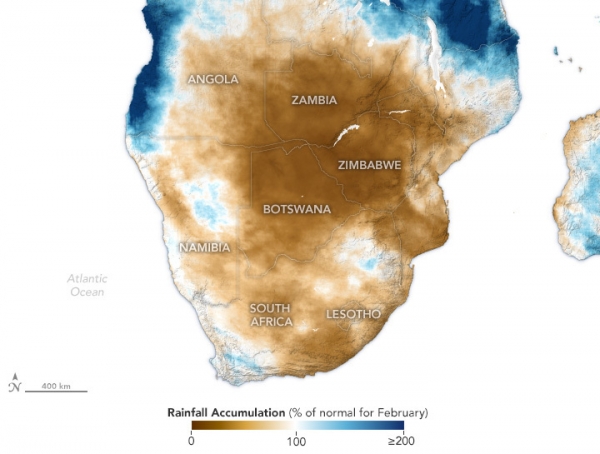A prolonged dry spell in southern Africa in early 2024 scorched crops and threatened food security for millions of people.
A prolonged dry spell in southern Africa in early 2024 scorched crops and threatened food security for millions of people. The drought has been fueled in large part by the ongoing El Niño, which shifted rainfall patterns during the growing season.
From late January through mid-March, parts of Southern Africa received half or less of their typical rainfall, according to researchers at the Climate Hazards Center (CHC) at the University of California, Santa Barbara. February 2024 was especially dry. The map above shows the amount of rainfall during that month, as a percent of normal (from 1981-2024). The map is based on the Climate Hazards Center InfraRed Precipitation with Station data (CHIRPS).
Precipitation would normally be highest from December through February. But CHC researchers analyzing CHIRPS data found that February 2024 was the driest February in the 40-year data record for an area spanning much of Zambia, Zimbabwe, southeastern Angola, and northern Botswana.
The parched conditions came at a critical time when crops need ample water supply for growth and to produce grain. Insufficient rain and high temperatures resulted in crop failure in several countries. By the end of February, maize (corn) crops had withered and died on 1 million hectares in central and southern Zambia—almost half of the country’s maize-growing area.
Read more at NASA Earth Observatory
Image: NASA Earth Observatory image by Wanmei Liang, using data from the Climate Hazards Center, at the University of California, Santa Barbara. FEWS NET data on drought and food insecurity are available on their data portal; FEWS NET Land Data Assimilation System data products can also be accessed through NASA’s website and the NASA Giovanni portal.




